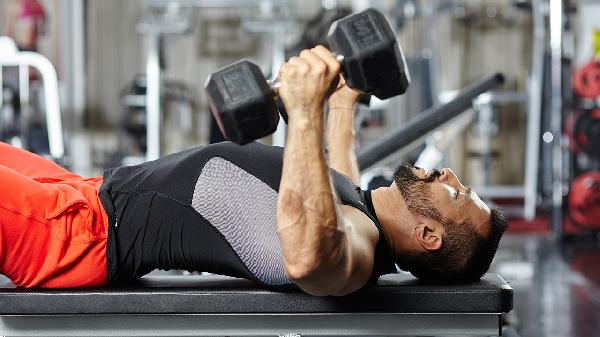Building muscle through exercise and working out to lose weight are two different things. If you have enough energy, you could work out all day without a problem, but for someone aiming to gain muscle, such a long workout time is obviously not suitable. So, how long should each workout session be to effectively build muscle?

How long does muscle training take to show significant results?
Both fat loss and muscle gain involve resistance training, which tends to focus on heavy weights with fewer repetitions, and includes 30 seconds to 2 minutes of rest between sets. Therefore, it’s best to calculate the total time, including both exercise and rest, to make it easier to understand. This means the time from when you start lifting weights to when you finish. The purpose of defining this workout time is to exclude non-exercise activities such as checking your phone or chatting during the workout (rest periods that are too long), so that only the actual exercise time is counted. Otherwise, some people might claim they work out for 2 hours every day at the gym without seeing results, when in reality they’re just chatting and resting.
High-intensity interval training (e.g., HIIT) typically lasts only about 10 minutes, but it can really exhaust someone. Doing 10 push-ups every day for a month won’t make your body noticeably stronger. So, before discussing workout duration, it’s most important to determine the intensity of the workout. Everyone’s starting strength level is different, and the same load will result in different performance for different people. Therefore, it’s crucial to identify your 8~12 RM weight (the weight used for muscle gain). For example, if someone can only lift a 15kg dumbbell 10 times with proper form and can’t lift it an 11th time, then 15kg is their 10 RM.
Typically, gym trainers recommend 3~5 sets per exercise, with a total workout time of 60~90 minutes. Is this approach reasonable? Why not 120 or even 150 minutes? In fact, resistance training quickly leads to lactic acid buildup, and you often need to rest after less than a minute of exercise before continuing. During this process, energy expenditure is very high, and after 3~5 sets, your form is likely to deteriorate. If you don’t reduce the weight or extend the rest period at this point, it’s easy to get injured.
On the other hand, moderate to high-intensity exercise can increase cortisol levels, which continue to rise as the workout progresses. Cortisol is a hormone that fitness enthusiasts particularly dislike (though it has significant roles in other areas), as it promotes muscle breakdown. Therefore, it’s important to minimize its effects during workouts. This is why it’s advisable to keep workout durations relatively short.
For general fitness enthusiasts, aiming for 60~90 minutes per session is quite suitable for muscle growth. Additionally, workout duration is influenced by the type of exercise and the individual’s training level. For some experienced fitness enthusiasts, they focus more on training efficiency rather than duration, and 30 minutes of exercise can be enough to stimulate muscle growth. Of course, building muscle isn’t just about training; it also requires a combination of proper diet and rest.
How can you make your workouts more effective?
First: Use compound exercises
Compound exercises are essential in fitness training. If a person only does simple isolated movements during their workout, their training effectiveness will be poor, and it will be difficult for their muscles to be efficiently trained.
Using compound exercises during training can increase the body’s testosterone production, which is highly beneficial for muscle growth. What are some examples of compound exercises? Squats, bench presses, deadlifts, etc. If you regularly practice these movements, your muscle-building results will significantly improve.
Second: Train 4~5 times per week
I’ve seen many workout plans where people train 3~4 times a week. In reality, this intensity isn’t enough, especially for those who are no longer beginners. If you want to make greater progress and develop more defined muscle lines, you need to increase your training intensity.
You can choose to train 4~5 times a week. This level of intensity will provide a better training experience for your muscles.
Third: Push the last set to failure
If you want your muscle lines to become more defined, you need to push yourself during training. The idea that easy workouts can build muscle is just a dream.
Many people avoid training to failure because it’s genuinely exhausting, but the results are truly effective. In my own workouts, I always push the last set to failure, and after I can’t lift anymore, I do 2~3 assisted reps. This way, you can feel your muscles fully pumped.
Fourth: Cut out high-calorie foods
If you want your muscle lines to be more visible, you need to keep your body fat levels low. Therefore, you should eliminate high-calorie foods from your diet and maintain a healthy eating habit. Only then will your body fat decrease, and your muscle lines become more pronounced.
Fifth: Consume enough protein
Lastly, make sure you’re consuming enough protein. In addition to working hard in your workouts, you need to provide your body with sufficient protein to help repair and grow your muscles. This will make your muscle lines even more visible!
























